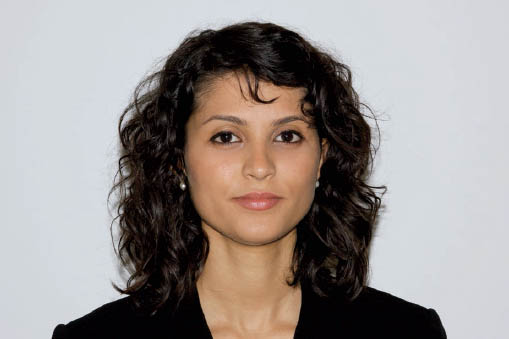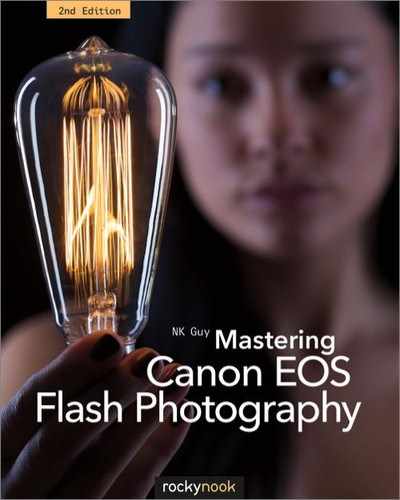1 Introduction
Fire Spinning. A relatively long shutter time recorded the whirling loops of flame of the burning fire staff. Two flash units, a 420EX on the ground to camera left as key, and a 580EX II on-camera as fill and E-TTL master, have frozen the action. Queen Elizabeth Theatre undercroft, an area that’s become an unofficial skater park. London, England. EOS 5D, 1.6 seconds at f/4.5, ISO 100, 30mm.
This is an example of slow shutter sync flash can be used to freeze foreground motion while exposing the background.
The invention of electronic flash and its subsequent miniaturization and automation completely transformed photography. The pioneers of photography could only shoot in sunlight, but today reliable and portable light sources are available to everyone making photography possible even in the most dimly lit settings.
Electronic flash was first used in the 1930s to freeze motion and illuminate dark scenes, but today it’s used for all kinds of photography. From the creative to the mundane, from supplementing daylight to designing complex scenes with multiple light sources, there’s a flash-based solution for every situation.
But flash photography can be an artistic and technical challenge. When most people hear the word “flash,” they think of harshly lit snapshots: friends in a dark cavern of a restaurant or living room, staring into the lens like a deer in the headlights. This represents the typical experience of flash photography—but it doesn’t have to be that way.
So the basic question is, how to go from this . . .

. . . to this?

Both photos were taken with the same camera, the same lens, the same focal length, and the same model. Everything was identical—except that the first photo was taken using the camera’s built-in flash, while the second photo was taken using a two-light studio setup.
This book will help you master the use of flash, covering everything from Canon’s Speedlite flash system to off-camera portable flash and professional studio lighting. It begins with the fundamentals of flash metering technology, discusses key concepts, documents the various features and functions available with EOS equipment, explores flash accessories and studio equipment, and concludes with a review of basic lighting techniques. Much of this material is relevant to users of any camera system, but most of the details of automated flash (TTL and E-TTL) are specific to Canon EOS.
Also covered is the growing field of off-camera flash, whether through portable battery units or traditional studio lighting. For years, off-camera flash was seen as too daunting for all but professional photographers, but the combination of digital’s immediacy and ease of use and popular websites such as David Hobby’s Strobist.com, have brought off-camera flash to a whole new audience.
Finally, this book is intended to be as thorough as possible. Every item was tested and evaluated before being included—this is no mere advertising brochure. Products are described as honestly and fairly as possible. Unfortunately, a few popular product lines are not included because some manufacturers and distributors declined to participate.
About this book
This book is structured in three separate sections. Part I explains the technology of flash photography and how it works. Part II deals with the nitty-gritty of the equipment in finer detail. Part III offers some lighting techniques to help take great-looking photographs.
Because of the complex and interrelated nature of the topics, the book isn’t necessarily structured in order of difficulty.
Why this book
In 1987 Douglas Adams wrote, “If you really want to understand something, the best way is to try and explain it to someone else.” This idea was the germ of my series of PhotoNotes.org articles, which I initially wrote in 2000–2002 when I myself was struggling to understand flash technology.
In those pre-digital (for me) days, the feedback loop was quite long and expensive. I had to take photos, make copious notes, develop the film, and hope I hadn’t lost the notebook by the time I got the photos back from the lab. I couldn’t afford one of David Hobby’s Polaroid backs. My articles began as a simple set of notes for my own use, but quickly evolved into one of the main online resources for Canon EOS flash information.
In 2008, I approached Rocky Nook about the possibility of using those articles as the starting point for a new book, and Mastering Canon EOS Flash Photography was born. This second edition focuses primarily on bringing things up to date and covering the latest radio wireless developments. EOS flash photography was once a sparsely documented land of mystery, but I hope these books have helped to change that.
NK Guy

